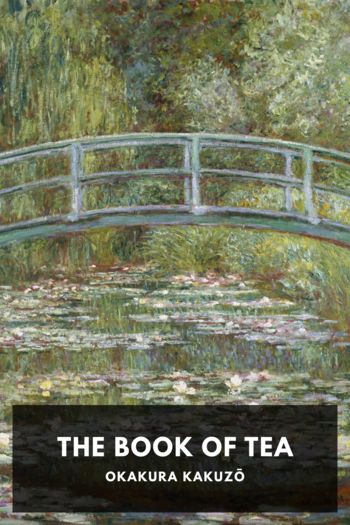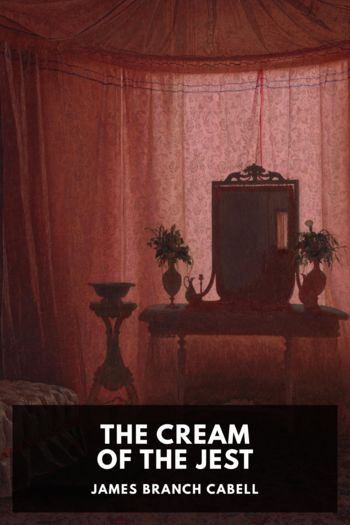Chocolate Sarah Moss (best fantasy books to read .txt) 📖

- Author: Sarah Moss
Book online «Chocolate Sarah Moss (best fantasy books to read .txt) 📖». Author Sarah Moss
Pietro Longhi, Morning Chocolate, c. 1750.
Georg David Matthieu, Seated Portrait of Herzogin Louise Friederike zu Mecklenburg-Schwerin opening a letter, 1770s.
With regard to drink, his liking was for the strongest, as it was not the flavour, but the effect, he sought for ... For the last twelve years, however, he left off all fermented liquors. To make himself some amends, indeed, he took his chocolate liberally, pouring in large quantities of cream, or even melted butter; and was so fond of fruit, that though he usually ate seven or eight large peaches of a morning ... and treated them with proportionate attention after dinner, yet I have heard him protest that he never had quite as much as he wished of wall-fruit.
Chocolate here works as an interesting replacement for ‘the strongest drink’, one which is associated with the insatiable appetite for the rare luxury of peaches. Hot-house and wall-grown fruit were available only to those who commanded substantial estates and skilful gardeners, so to say that one could not get enough wall-fruit would be like regretting the lack of alpine strawberries or quail’s eggs. Chocolate, or at least chocolate with the excessive enrichment of cream and butter, seems to come close to this category.
Jean-Baptiste Charpentier, The Penthievre Family, or the Cup of Chocolate, 1768.
Jean-Etienne Liotard, The Chocolate Girl, c.1743—5.
As this vignette suggests, the orderly domesticity of the leisured families gathered around chocolatieres in eighteenth-century portraiture is not always reflected in the literature of the period. From the writings of the Marquis de Sade at one extreme to those of Jane Austen at the other, chocolate in later eighteenth-century literature is almost invariably associated with a degenerate, loose-living aristocracy, addicted to luxury and oblivious to the suffering of the poor. (This could,of course, be the view from the other side of the silk-clad families enjoying their slave-grown chocolate of a morning.) It is here that we see chocolate being feminized in England after its association with the distinctly masculine environment of the coffee house in the seventeenth century.
Histories of chocolate often cite the gastronomic tastes of the Marquis de Sade as evidence of chocolate’s innately erotic appeal. De Sade’s fiction involves the frequent consumption of chocolate before and during sexual orgies, and his letters to his wife, usually from prison, contain repeated, urgent requests for all kinds of confectionery. The interest in chocolate in the pornographic fiction is explicitly related to coprophagy, and a strand of chocolate scholarship explores this relationship in more detail, but in fact when de Sade was grooming prostitutes in real life he tended to give them confections containing aniseed and, allegedly, the aphrodisiac cantharides (Spanish fly) in order to provoke lust and wind. There is little evidence that either was effective, and indeed little evidence that de Sade’s practises bore much relation to his fiction. De Sade’s prison letters to his wife make many demands for clean linen, particular toiletries and all sorts of cakes and sweets. On 16 May 1779, he upbraids Madame de Sade for failing to fulfil his order:
The sponge cake is not at all what I asked for. 1st, I wanted it iced all over, underneath and on top, with the same icing as the little cakes; 2nd I wanted it to have chocolate inside, and there isn’t even the least trace of chocolate. I beg you to have it sent to me at the first opportunity, and make sure that someone trustworthy puts the chocolate in. The cakes must smell of it, as if you’re biting into a bar of chocolate.
On 15 June 1783 he writes:
First of all I need linen, very definitely, or I’m out of here; four dozen meringues, two dozen big cakes; four dozen vanilla pastilles with chocolate, and not an unspeakable drug like the one you sent before.4
Any relationship between chocolate and sex here is clearly one of substitution. The combination of specificity and sensuality, the precision about both how the cake should be iced and how it should feel to smell it, recalls de Sade’s highly organized approach to debauchery in Les 120 Journées de Sodome. But it is worth noting that, as devotees of rare and expensive chocolate usually point out, those who ‘need’ chocolate usually need it in a very sugary form. De Sade is not asking for the best South American cocoa, or demanding a chocolatiere or a molinillo. He wants ‘biscuit de Savoie’, a fat-free sponge cake, with a great deal of icing, and then he wants meringues, cakes and vanilla and chocolate candies, foods that require time, expertise and effort to produce. De Sade’s irritation with the inadequacies of previous care packages emphasizes his impotence and frustration in these transactions. These requests are reminiscent of the fantasies of lost polar explorers or the protagonists of children’s fiction, people for whom food displaces the normal adult interests in money and sex. Food histories tend to quote the paragraphs about chocolate, but de Sade also demands gloves, powder, toiletries, candles (different sizes for different times of day) and books. It’s not about chocolate but about power and gratification behind bars, and if chocolate offers one of several ways of exercising this power it is





Comments (0)